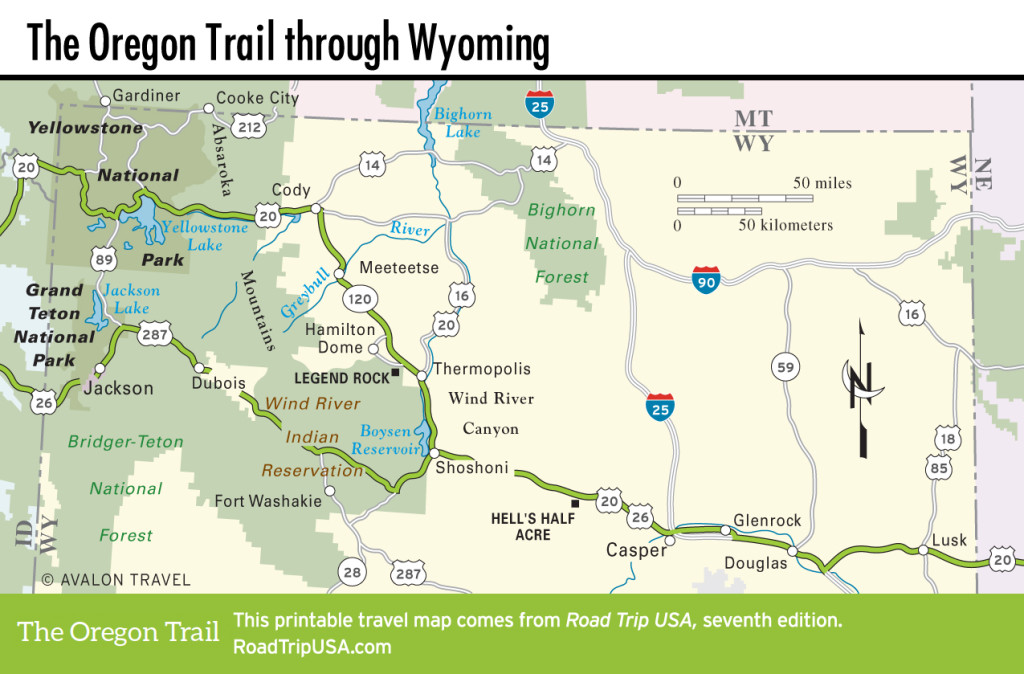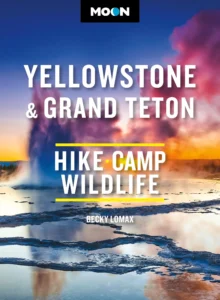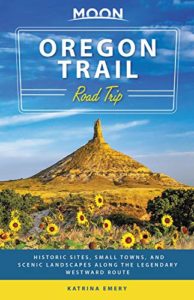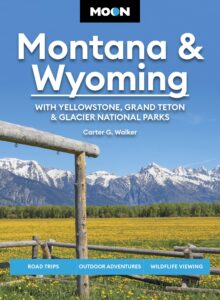Cody
Visiting Cody, Wyoming
Eastern gateway to Yellowstone National Park, and an enjoyable overnight stop in its own right, Cody (pop. 9,828) is a self-conscious frontier town and a busy center for local ranching and wood products industries. The outskirts are lined by Walmarts, Kmarts, and all the fast-food franchises you could name, but the town center along Sheridan Avenue (US-20) still looks like the Wild West town Cody was built to be.
The annual Cody Stampede Rodeo started in 1919 and has been a part of the town’s 4th of July celebrations ever since, making it the nation’s longest-running rodeo. It draws professional cowboys from across the continent. Equally impressive, The Cody Nite Rodeo (307/587-5155, 8pm daily June-Sept., $23), at the huge rodeo grounds at the west end of town, has been held since 1938. Get a seat in the “Buzzard’s Roost,” close to the chutes where the cowboys mount those bulls and buckin’ broncos for this amateur event.
Sitting on the Big Horn Basin plains at the foot of the mountains, Cody was founded in the late 1890s by Wild West showman “Buffalo Bill” Cody, whose name graces most everything in town, including the Buffalo Bill Center of the West (720 Sheridan Ave., 307/587-4771, daily Mar.-Nov., Thurs.-Sun. Dec.-Feb., $20). One of the country’s great museums, and certainly the best in the Wild West, this place tells all you could want to know about the American frontier. The center is divided into five main collections. First stop should be Buffalo Bill’s boyhood home, which was moved here from LeClair, Iowa, in 1933; then move on to the Buffalo Bill Museum, which includes a battery of movies and artifacts from his famous Wild West Show, a circus-like extravaganza that toured the world. The Whitney Western Art Museum, one of the country’s most extensive collections of western art, displays important works by George Catlin, Thomas Moran, Albert Bierstadt, and Frederic Remington, plus some fine contemporary works. Gun freaks will enjoy the Cody Firearms Museum, which displays more than 7,000 historic weapons. Saving the biggest and best for last, the Plains Indian Museum has an amazing collection of art and artifacts created by the diverse Plains peoples, from beadwork dresses to a reconstructed Sioux tepee. Pride of place is given to an extraordinary buffalo robe painted with scenes of the legendary Battle of Little Big Horn.
At the west edge of Cody is Old Trail Town (307/587-5302, daily mid-May-Sept., $10), a low-key but engaging collection of old buildings moved here from northwestern Wyoming and southern Montana. Wagons, buffalo robes, and other relics are on display. A memorial cemetery holds the remains of Wild West figures, including John Jeremiah “Liver Eating” Johnston, played as Jeremiah Johnson—with no t—by Robert Redford in the 1972 movie named for the man.
Food and Hotels in Cody, Wyoming
You’ll find most of Cody’s good places to eat on Sheridan Avenue, the main drag. The Wild West-themed Proud Cut Saloon (1227 Sheridan Ave., 307/527-6905) has taxidermy heads of megafauna on the walls. The menu ranges from burgers at lunch to great steaks at dinner.
A restaurant and rooms are available at the historic Irma Hotel (1192 Sheridan Ave., 800/745-4762 or 307/587-4221, $145 and up), which was built by “Buffalo Bill” Cody and named for his daughter; it still features a lovely cherrywood bar given by Queen Victoria, and there’s an evening gunfight on the front porch.
Fans of vernacular roadside Americana may want to have a look at the Buffalo Bill Village (1701 Sheridan Ave., 800/527-5544 or 307/587-5544, $189 and up), which started life in 1914 as a cowboy campout, was developed in the 1930s as a log cabin motor court, and now stands in the heart of Cody amid the full-service Holiday Inn family resort.
The nicest place to stay in Cody may well be the Big Bear Motel (139 W. Yellowstone Ave., 800/325-7163 or 307/587-3117, $125 and up) near Trail Town.

















